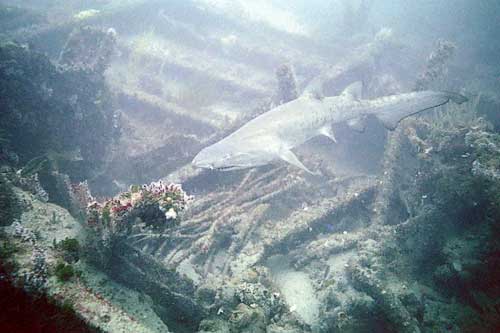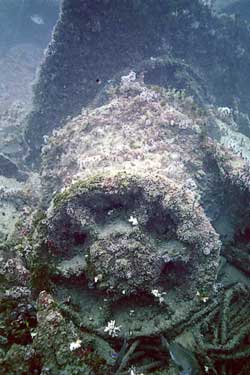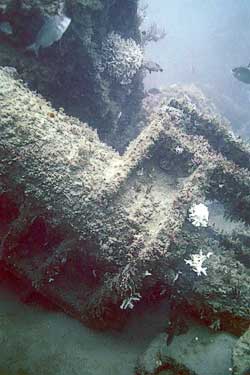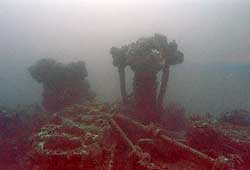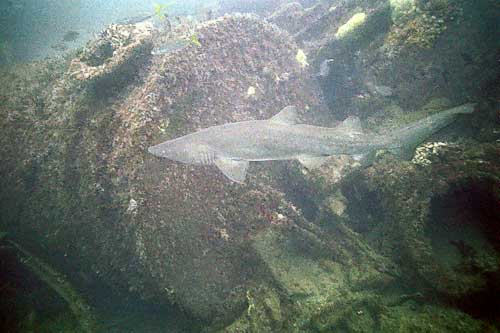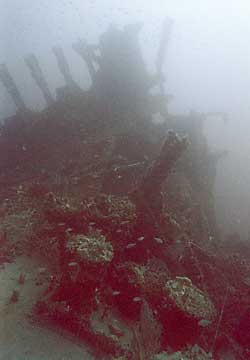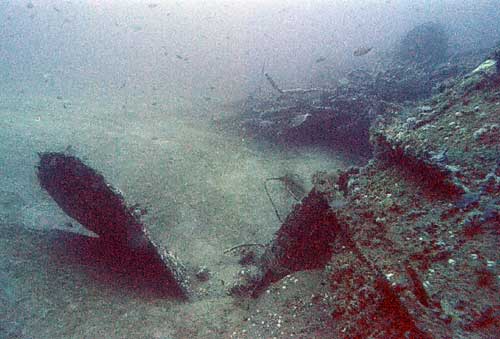
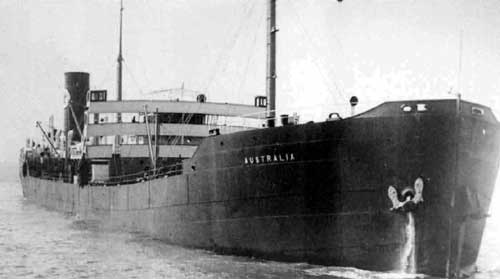
The Australia carried a crew of 40. There were 36 survivors; 4 killed. One of the dead crewman, William F. Johnson, Second Assistant, age 39, had his name later used for a liberty ship .
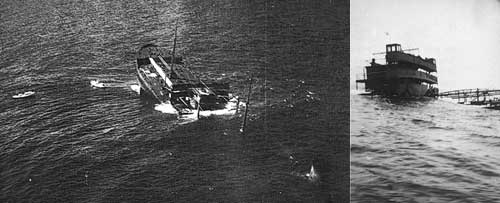 |
|
|
Australia post-torpeding (Gentile)
|
|
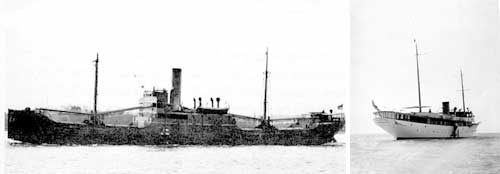 |
|
|
William J. Salman (L) and USS Ruby(R) picked up survivors from Australia (11,8)
|
The Australia settled by its stern, but its bow remained afloat and inspite of the torpedo damage, none of its cargo holds were ruptured. The USSGC Dione stayed in the area of the torpedo attack thinking that the u-boat would return to finish off its victim. The Dione soon got a contact and started it depth charge attack, but the U-332 escaped without damage. Because the bow and bridge of the AUSTRALIA were showing above water, a salvage tug, RELIEF (SP-2170) was dispatched to inspect the damage. She reported the wreck ship burned out and a total loss. It is unclear as to the source of the fire as the crew did not report the ship burning when they abandoned the vessel. The ship later broke apart and sunk.
The SS WILLIAM J. SALMAN was later torpedoed and sunk on 5/18/1942. The U-332 was sunk with loss of all hands on 4/26/1943.
